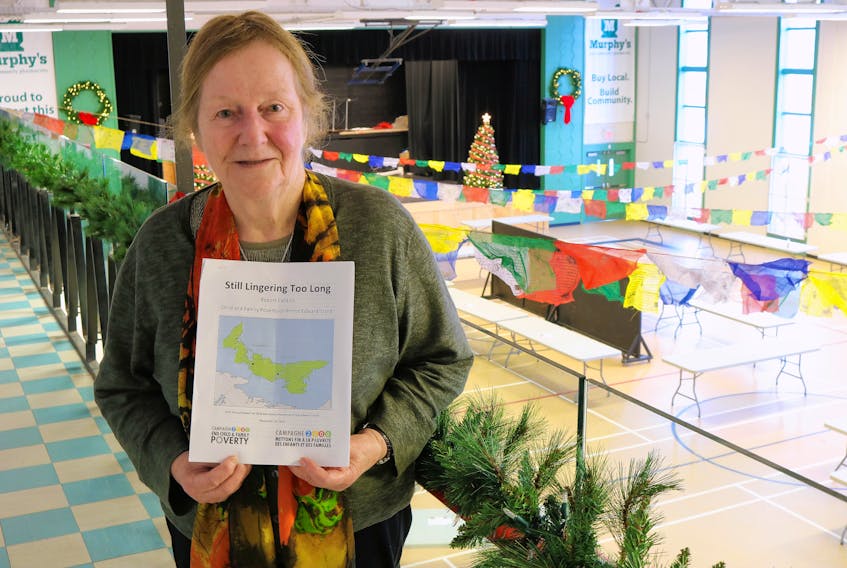If you ask Mary Boyd, she will tell you that there are clear solutions to poverty.
In the latest report of the Report Card on Child and Family Poverty in P.E.I., Boyd writes that both provincial and federal plans for tackling poverty are inadequate and full of half-hearted measures.
Boyd, a long-time anti-poverty activist, has penned the report for the last five years. This year’s report is titled Still Lingering Too Long.
P.E.I.’s poverty reduction plan, which involves $68 million in funding between 2019 and 2024, was released earlier this month. The federal poverty reduction strategy, which sets a plan of reducing poverty rates by 20 per cent in 2020, was also released in November.
Boyd believes that both plans have fallen far short of a real commitment to address family and child poverty
"We could do it. We could cut poverty in half by 2020. We could easily cut child poverty in Canada by 100 per cent earlier than 2030, much earlier than 2030,” Boyd said. "Again, it's political will."
Boyd believes that the recently announced 10 per cent increase in food allowance and six per cent increase in shelter rates for social assistance recipients still fall below what is needed. She points to the current goal of the Department of Family and Human Services Department to increase social assistance food rates up to 70 per cent of the average cost of the National Nutritious Food Basket by April 2019.
"That means that you're saying that people in poverty should only have the very basics. Right now they don't have the basics, they fall very short of it," Boyd said. "Where's the other 30 per cent going to come from to provide nutritious food?”
Others have critiqued recent rises in social assistance shelter rates. Green Party MLAs have questioned Family and Human Services Minister Tina Mundy in the legislature about the disparity between amounts paid in social assistance for shelter and the rising cost of rent in Charlottetown.
The report card notes that the rate of child poverty in P.E.I. dropped slightly in 2016, the most recent year for which statistics are available, to 20.3 per cent. This drop is likely due to the introduction of the Canada Child Benefit by the federal government, says Boyd.
The child poverty rate for the Charlottetown area is even higher, at 27.2 per cent, 7.6 per cent above the national average.
Boyd says the province’s focus on poverty has had some positive elements. She believes the efforts of ministry staff to consult with low-income individuals were positive and genuine.
But she believes that key policies - doubling the Canada Child Benefit, increasing the minimum wage to $15 dollars and building government-financed social housing – are being overlooked in the current policy plans.
"This is all unsustainable. It only takes a government policy to change all of that," Boyd said, referring to the Island’s poverty rates.
Supporting Island families
Islanders are invited to help implement the Poverty Reduction Action Plan by providing advice to government and support to community networks on initiatives that will help those who need it most.
The Poverty Reduction Council will monitor the delivery of 67 concrete action items over five years and a $68 million investment focused on improving housing, food, employment and well-being. Islanders can apply to join the council through Engage P.E.I.
The action plan, Belonging and Thriving, has four main goals, including to help Islanders in need, to support the most vulnerable, to build on supportive communities and partners and, to improve the well-being of children and youth.
The Poverty Reduction Action Plan builds on recent government initiatives to reduce poverty, such as the Housing Action Plan, AccessAbility Supports, Social Assistance Renewal, Seniors Health and Wellness Action Plan and Early Learning and Child Care Investments.
For more information, visit Princeedwardisland.ca/povertyreduction.









